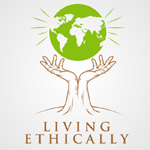- 1,4 – Dioxane
Cancer risk. - 2-bromo-2-nitropropane-1,3-diol
May contain / release formaldehyde, which is an irritant, carcinogenic and a neurotoxin. - AHAs – Alpha-hydroxy acids (or ‘fruit acids’; incl. Glycolic acid and lactic acid)
Can penetrate the skin; May increase sensitivity to sunlight therefore increase photo-aging and risk of sun-related skin cancers. - Artificial colours
The following colours may contain heavy metal impurities and could be carcinogenic: . Blue 1 (E133) . Green 3 (E142) . D&C Red 33 (E127) . FD&C Yellow 5 (E102) . FD&C Yellow 6 (E110) - BHT (butylated hydroxytoluene)
Preservative antioxidants; Possible allergen; Has been linked to possible behavioural effects, reproductive failures, not allowed in baby food. - Bronopol
Cancer risk. - DEA / TEA (diethanolamine / triethanolamine)
Can react with nitrites (often present in cosmetics as contaminants but not disclosed on the labels) to form nitrosamines – most nitrosamines are carcinogenic . - Diazolidinyl urea / Imidazolidinyl urea
May contain / release formaldehyde, which is an irritant, carcinogenic and a neurotoxin. - DMDM hydantoin
May contain / release formaldehyde, which is an irritant, carcinogenic and a neurotoxin. - Fragrance (Parfum, or Aroma)
Can exacerbate asthmatic symptoms; May contain chemicals linked to cancer, damaging to the liver and kidneys and toxic to the nervous system. - Germall
Diazolidinyl Urea (see note above) - Lanolin
Cosmetic grade Lanolin can be contaminated with carcinogenic pesticides such as DDT, dieldrin and lindane. - Methylchloroisothiazolinone / Methylisothiazolinone
Can cause allergic reactions or irritation. - Padimate-O (octyl dimethyl PABA)
Cancer risk. - Parabens (Alkyl parahydroxy benzoates, or butyl/methyl/ethyl/propyl/isobutyl paraben)
Oestrogen mimics; Can penetrate the skin. - Petrolatum / Mineral Oil / Paraffin Wax / Petroleum Jelly
By-products of the petrochemical industry. They are not absorbed by the skin, and block natural respiration, excretion and absorption of other nutrients. May contain oils and other impurities which could be toxic or harmful. - Phthalates (Dibutyl (DBP), di(2-ethylhexyl) (DEHP), di-ethyl phthalate (DEP), butyl benzyl phthalate (BBP))
Risk to pregnant women and unborn children; May disrupt hormones and cause birth defects; Linked to asthma and allergic disease. - P-Phenylenediamine (PPD, or Para-phenylene-diamine)
Linked to cancer in workers; Linked to asthma and allergic disease; Can penetrate skin; Skin irritant. - Propylene glycol (propan-1,2-diol)
Humectant – used to maintain moisture; Can cause contact dermatitis; Linked to depression of the Central Nervous System. - Quaternium 15
May contain / release formaldehyde, which is an irritant, carcinogenic and a neurotoxin. - Triclosan (5-chloro-2 (2,4-dichlorophenoxy)-phenol) or Trade name – Microban
Bioaccumulative – builds up in fatty tissue and can’t be broken down properly; Has been found in human breast milk and fish; Dioxins (linked to cancer) are formed when it is manufactured, incinerated or exposed to sunlight. - Sodium Lauryl Sulphate / Sodium Laureth Sulphate
Skin, eye and respiratory tract irritant; May damage liver, lungs and immune system; Some evidence to suggest reproductive effects. - Talc
Cosmetic grade talc (often found in baby powders, face powders, body powders and some contraceptives) is carcinogenic. - Toluene (Toloul, methylbenzene)
Risk to women workers of spontaneous abortions; Skin irritant; Toxic to central nervous system, eyes, blood, liver, kidneys and skin.
Endangered Wild-harvested Medicinal Plants and Essential Oils to avoid
An asterisk indicates that the plant or tree is also valued for its essential oil
- * Agarwood (Aquiliara malaccensis and other Aquilaria species), also known as aloeswood, eaglewood and gaharu. Found in eastern India, though now on the verge of extinction there. Populations are widespread but patchy in Indonesia, Malaysia, the Philippines, Papua New Guinea, Laos, Burma, Vietnam, and Cambodia.
- Aloe species (except Aloe vera), from Africa. •American ginseng (Panax quinquefolium)
- * Amyris (Amyris balsamifera), from the South Pacific and West Indies.
- * Arnica (Arnica montana)
- Beth Root (Trillium spp.)
- Black Cohosh (Cimicifuga racemosa)
- Blue Cohosh (Caulophyllum thalictroides)
- * Calamus (Acorus calamus)
- Cascara (Rhammas purshiana)
- * Cedar, true (Cedrus spp), including Atlas cedarwood (C.atlantica) from North Africa, and Himalyan cedar (C. deodara).
- Devil’s claw (Harpagophytum spp).
- Echinacea (Echinacea spp.)
- Goldenseal (Hydrastis canadensis)
- * Guaiac (Guaiacum officinalis and G.sanctum), from the West Indies.
- Himalayan Mayapple (Podophyllum hexandrum).
- Indian Yew (Taxus wallichiana), also found in Afghanistan, China, Nepal, Pakistan.
- Kutki (Picrorhiza kurroa), from the Himalayas.
- Lady’s Slipper Orchid (Cypripedium calceolus var. pubescens, C. calceolus)
- Liquorice (Glycyrrhiza glabra)
- May Apple (Podophyllum peltatum)
- Orchid species (Orchidaceae), all species are protected throughout the world.
- * Oregano (Origanum spp)
- Oregon Grape (Mahonia spp). NB Mahonia sonnei (syn. M. aquifolium) is no longer regarded as threatened. It was de-listed as such by the United States Environmental Protection Agency, 1st October 2003.
- Pleurisy root (Asclepias tuberosa)
- Peyote (Lophophora williamsii)
- Prunus bark (Prunus africanas), from the wet montane forests of Africa.
- * Rosewood Aniba rosaeodora, and all related species found in Brazil and other parts of South America.
- * Sandalwood (Santalum album), from India, Indonesia and other parts of southeast Asia.
- Slippery Elm (Ulmus rubra)
- Snakeroot (Rauvolfia serpentina), from India, Malaysia and Indonesia.
- * Spikenard (all wild-harvested species)
- Sundew (Drosera spp)
- * Thyme (Thymus spp)
- Virginia Snakeroot (Aristolochia serpentaria)
- * White Sage (Salvia apiana)
- Wild Indigo (Baptisia tinctoria)
- Wild Yam (Dioscorea villosa, D. spp)
- Yellow gentian (Gentiana lutea)
Note: It is the harvesting of these plants / trees from the wild that is the cause of concern. A number of the herbs on the list are now also available from cultivated sources (e.g. liquorice, black cohosh, goldenseal, echinacea, arnica and some others). If in doubt query with the retailer.
Sources:
Women’s Environmental Network – Toxic Tour
Green People – Skin Pollution feature
Chrissie Wildwood – Spotlight on the trade in wild plants
